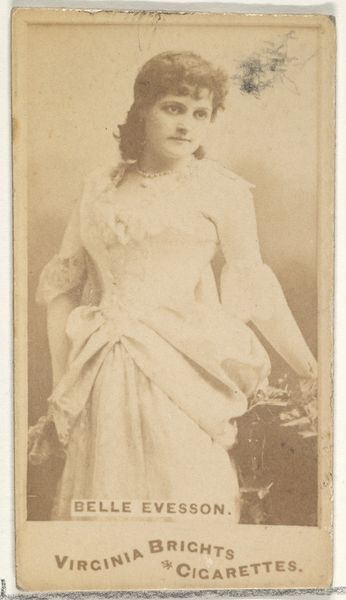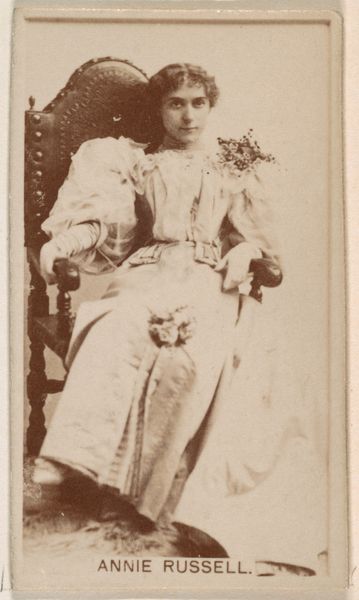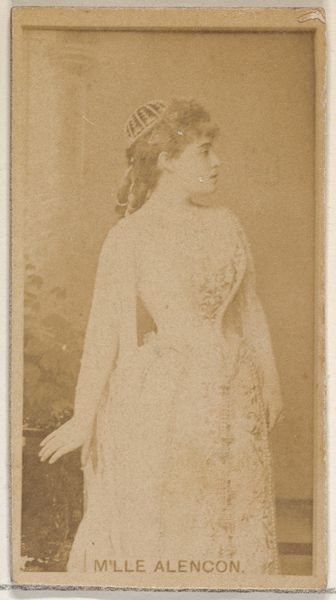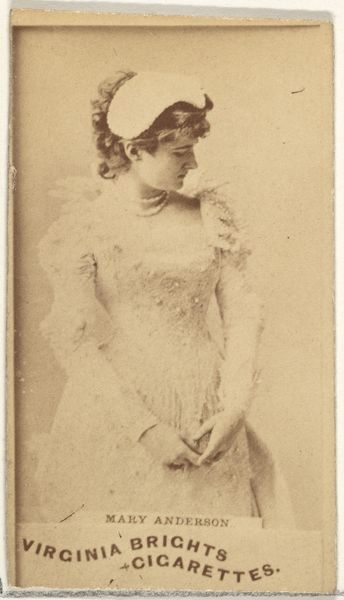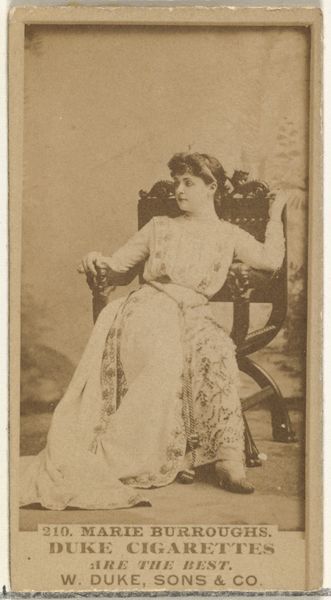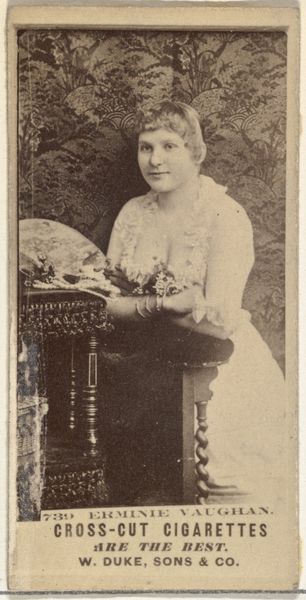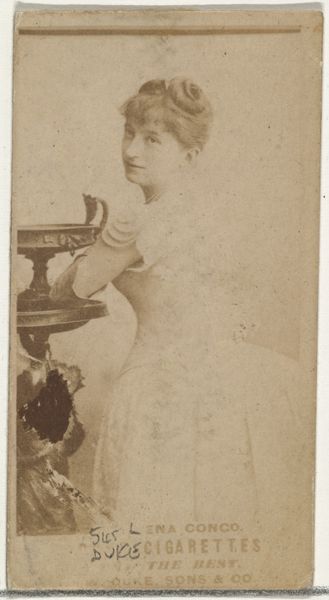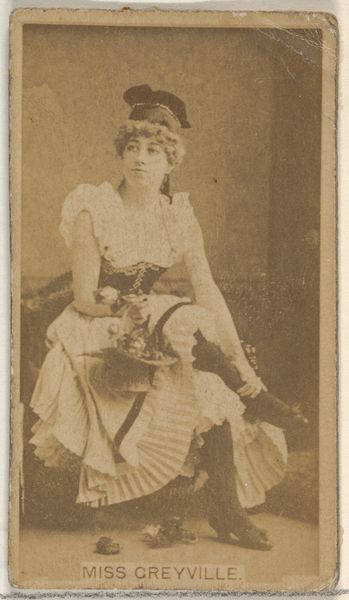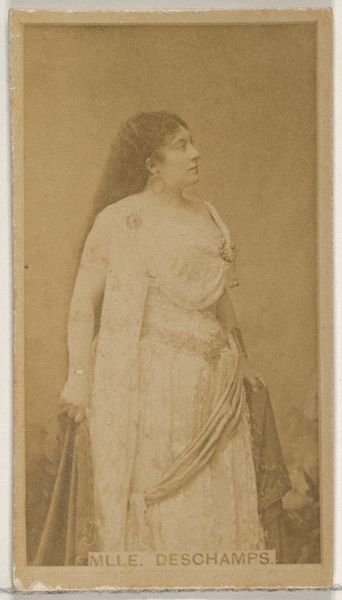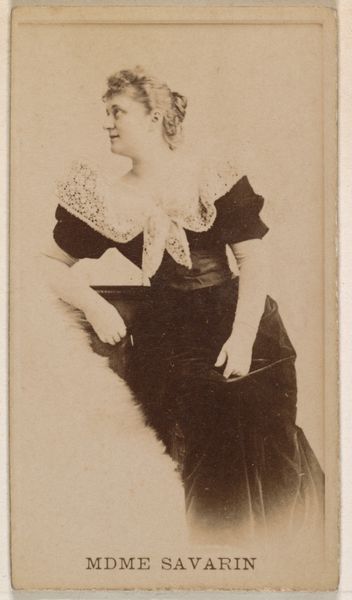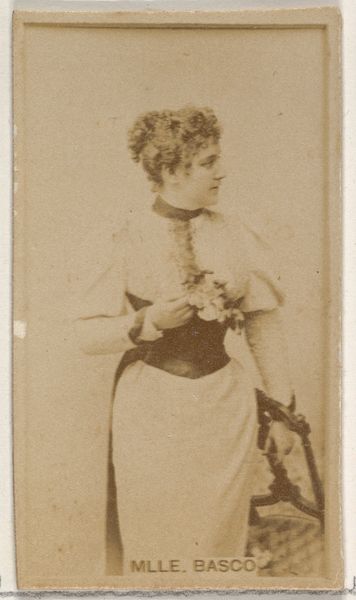
Card Number 107, Marie St. John, from the Actors and Actresses series (N145-4) issued by Duke Sons & Co. to promote Cameo Cigarettes 1880s
0:00
0:00
drawing, print, photography
#
portrait
#
drawing
# print
#
photography
#
genre-painting
Dimensions: Sheet: 2 11/16 × 1 3/8 in. (6.8 × 3.5 cm)
Copyright: Public Domain
Curator: This is card number 107, depicting Marie St. John. It's from the "Actors and Actresses" series issued by Duke Sons & Co. in the 1880s to promote Cameo Cigarettes. Editor: It feels so incredibly posed, like a porcelain doll. There's a real sense of stillness, despite the decorative flourishes of her dress. Curator: These cards were immensely popular at the time. Tobacco companies recognized the marketing potential in celebrity endorsements. Think about it: art intersecting directly with commercial enterprise. Editor: Absolutely, the choice to depict actresses tells us a lot. The late 19th century witnessed women claiming space in the public sphere, finding some semblance of power through visibility. So to sell cigarettes, it made sense to appeal to a wider range of customer and leverage the public image of prominent woman figures. Curator: It's fascinating how this image acts as a time capsule, capturing not only the aesthetics but also the social dynamics of the period. Notice how the photographic print is meticulously reproduced to fit within a collectible card. The portrait adheres to popular notions of feminine beauty but ultimately acts as advertising material. Editor: How does our awareness of it being “product placement” change our engagement? How does that frame of advertisement and popularity actually reshape discussions around representation and gender identity today? I can’t help but consider where her agency starts and stops in the picture. Curator: It underscores the complex interplay between art, commerce, and celebrity culture. These small cards helped create a cult of personality. St. John becomes an icon of the era by the Duke company and the circulation and consumption of her image. Editor: Ultimately it's the contrast between the seemingly genteel portrayal and its function as a cog in the wheels of capitalism that holds my attention. Curator: It prompts us to reconsider what we classify as 'high art' versus popular imagery, and question the ways in which art serves different agendas within society. Editor: I'll certainly be chewing on that point for quite some time to come.
Comments
No comments
Be the first to comment and join the conversation on the ultimate creative platform.
